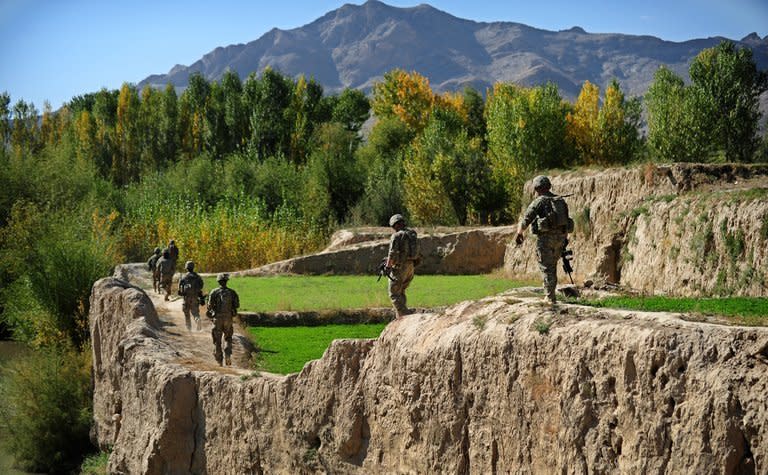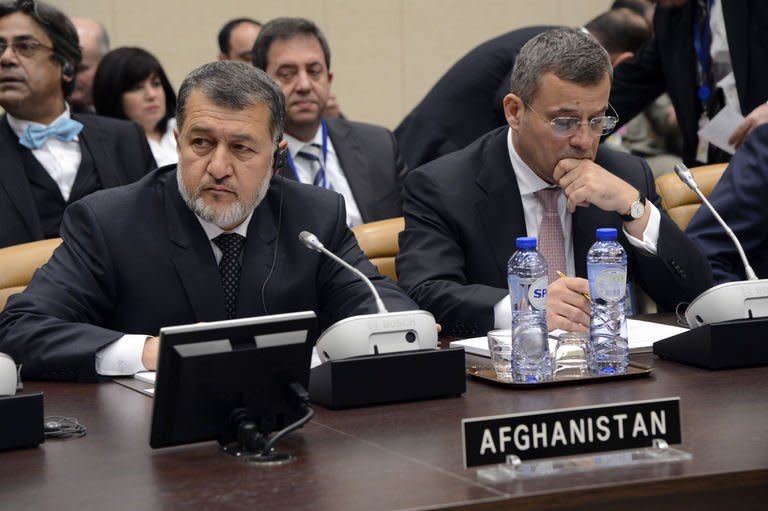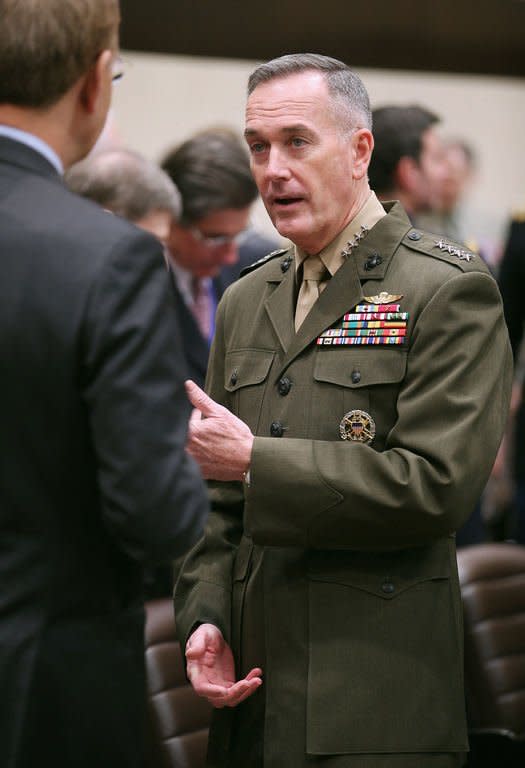NATO may station up to 12,000 troops in post-2014 Afghanistan
NATO may station up to 12,000 troops in Afghanistan to train and assist Kabul's forces after its combat mission against the Taliban ends there in 2014, US officials said Friday. US Pentagon spokesman George Little said NATO was considering deployment of between 8,000 and 12,000 troops, including any US contribution, but no final decision has yet been made. Reports of a US presence of 8,000 to 12,000 troops "are not correct," he said. President Barack Obama "is still reviewing options and has not made a decision about the size of a possible US presence after 2014," he said, adding that discussions will now continue with NATO allies and Afghanistan. US press reports suggest Washington wants a US troop figure well below 10,000. The issue of NATO's post-2014 mission in Afghanistan is sensitive, with the allies anxious to ensure that the efforts in blood and money of more than 12 difficult years are maintained by a strong Afghan army. However, the war has grown increasingly unpopular and some countries are reluctant to make a large commitment given the risks still posed by the Taliban. Additionally, there has been uncertainty over the US role as Washington and Kabul negotiate an accord on the legal status of US troops after 2014. The US government has taken a hard line, insisting on a watertight accord before any deployment is made. Officials say no agreement is likely until much later this year. Earlier, US Defense Secretary Leon Panetta had declined to give precise figures for the post-2014 mission and stressed that NATO was looking at a variety of options and seeking to maintain the most flexibility. Panetta, who also rejected the report of 8,000 to 12,000 US troops being involved, said the training and advisory mission would have a presence throughout Afghanistan. There "will be a presence in Kabul and in the North, South, West and East," he told a press conference at the end of a two-day NATO defence ministers meeting in Brussels. He also detailed the US troop withdrawal programme after Obama last month announced that 34,000 soldiers -- just over half the current number -- would be brought home this year. US forces will be largely maintained for the upcoming Afghan fighting season and then reduced to about 50,000 by November and 32,000 by February, staying at that level during elections, after which the remainder will go home, he said. The meeting also discussed a proposal to keep the Afghan army at around 350,000 through to 2018, rather than reduce it steadily to some 230,000 once foreign troops leave, officials said. They gave no precise reason for this possible change of tack beyond the need to reassure Afghans that NATO was not going to abandon them. Ministers spent a lot of time too on how the 28-member alliance could make tight budgets go further as governments cut spending to balance their books. The United States, NATO's dominant power, has increasingly complained that European defence cuts mean it shoulders more of the burden and Panetta warned again Friday over the dangers. Deep spending cuts and what he described as "US political gridlock" were a risk to military capability, he said. "I do fear, if it is not already so, that the alliance will be stretched too thin," he said. Panetta, 74, had not expected to come to Brussels but the Senate delayed a vote on President Obama's nominee to replace him, Chuck Hagel, until next week.




